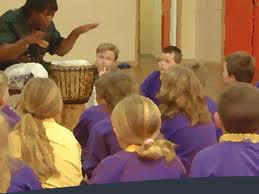
In Part 1 I asked, “What if I could suggest a Sunday School lesson method which will increase involvement/participation, retention (remembering), evangelism, and preparation of new teachers? Would you be interested in the method?” In Part 2, I will overview the steps of the method for telling the Bible story that I suggest in order to accomplish increases in all four areas. And, I will point out times that method for telling the Bible story will naturally increase involvement and participation of the class.
OVERVIEW OF METHOD. There are several significant pieces of the method that I suggest beyond telling the Bible story. These pieces of the method make the increases in the four areas mentioned above possible. Consider the following and their impact on involvement and participation:
- REVIEW. Ask what the scripture story was about last week. Ask what the truth or point of the story was. Then ask what they did to live out the truth. This reinforces the fact that you are expecting more than knowledge gain. Not everyone may participate, but several will.
- PRAYER. Focus this prayer upon help for listening and focusing on God and His word. Ask God to help you to hear and apply scripture to your life. You may want to call on someone in the class to pray this prayer, but emphasize that the prayer is to ask God to help you listen to Him and His Word.
- INTRODUCTION. Get the attention of those in the class. Help them shift toward thinking about the session, truth, and passage. This can be done by helping them understand the context for the story. It can be done by asking them to listen for an answer to a question. It can be done in many ways, but help them prepare to listen.
- STORY. Tell the story. Do not read it. Do not memorize it. Tell it as accurately as possible. Practice telling it (out loud) with emphasis, gestures, and emotion where appropriate. This won’t take as long as you think. Ask someone to check you as you practice. Look at everyone in the room as you share the story. Done well, storytelling will capture the imagination as well.
- REBUILD. As review and to reinforce the story, ask what happened first. Then what happened next. And so on through the whole story. Don’t tell them; get them to tell you. If they get something out of order, ask what happened before that. Make sure the story is rebuilt sequentially with nothing left out. Done well, this can get lots involved. In fact, work to avoid the same one or two doing all the responding.
- QUESTIONS. There are several key questions which should be asked here. Consider these: Who are the main characters? What do we learn about them? What do we learn about God/Jesus/Holy Spirit in the story. This one is important: To which character in the story do you most relate, and why? (Try to get everyone who is willing to share an answer to this question, even if they have to do so in small groups.) What does God want you to do as a result of the story? What will you commit to do? Again, done well, questions can get nearly everyone involved.
- LIMIT YOUR TALKING. To increase participation, make sure no one takes more than 25% of the time for talking, including the teacher/group leader. That includes setting up the story, telling the story, and asking questions. The point is to get them involved which helps with all four increases mentioned in the opening paragraph.
- POINT TO SCRIPTURE. When someone asks a question that you cannot answer, ask the group. Or more importantly, ask them what the passage says. Keep focused on the passage. If other scripture is appropriate, feel free to share it. But look for answers in God’s Word rather than personal opinions.
While not every passage of scripture is a story, many of these principles mentioned above would increase involvement and participation in any type of scripture passage. As I mentioned in Part 1, Avery Willis has stated that there are 888 stories in the Bible. If you taught one per week, that would take more than seventeen years.
How would you implement this in your class? You might begin by using the principles above to tell the Bible story without adding the other method elements suggested. Then you might add the rebuilding and continue as normal. Then you might add the questions. I have not yet been with a group that has a negative reaction to any part of this method. And participants have been open and honest in response to the questions. They enjoyed participating.
Pray. Prepare well. Give God your best. Tell the Bible story. Use this method, and come back to this post with a report of the response of your group. Or ask questions or share your comments. Give God your best effort in leading His people to know and live out His Word! Be revolutionary!
Leave a Reply